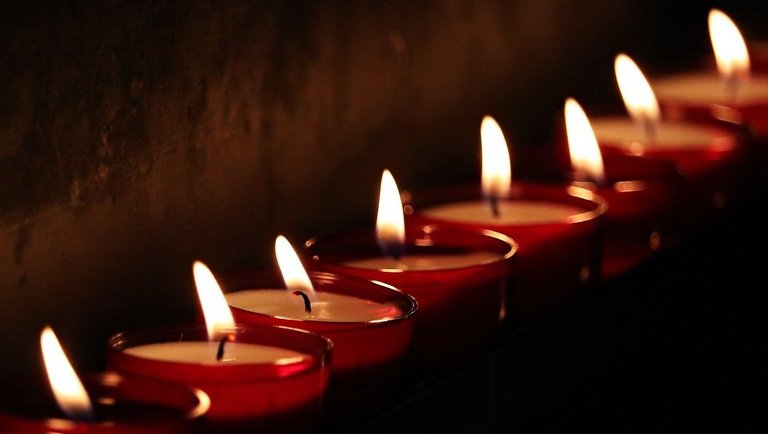
Hard times are coming.
Covid. Response to Covid. Supply chain shock. The Great Resignation meets the Great Termination. Whispers of war. Chaos and disorder in the West. Major inflation. Alliance of corporations and governments to maximise wealth and power at the expense of the people. And things can still get worse.
This is a time for courage.
You cannot run from what's coming. You cannot hope that hard times will pass you over. You cannot pretend that you will not encounter obstacles in your path. To flee from adversity is to guarantee that it will come to you, stronger than before. It is the equivalent of ignoring a termite-infested house. You can close your eyes to the infestation and leave them alone, but eventually the house will collapse—and you can no longer ignore it.
You must face adversity and obstacles with a cheerful spirit and a stout heart. You must prepare yourself for all possible eventualities. You must be ready to execute emergency plans, to adapt in the face of unforeseen eventualities, and to navigate these ever-changing times. When troubles come, you must meet them with courage, and stride boldly towards your goal.
But courage must be cultivated.
People do not rise to the occasion. They fall to their level of training. For most people who live in the First World, there is little reason to cultivate courage. They've lived their lives in softness and ease. They've never had to grow their own crops, hunt their own food, find their own water, fight for hearth and home. They never had to worry about existential threats. The ones who have had to overcome such trials soon discover that there is a huge gulf between those who have seen the elephant, and those who never will.
But now is a time for courage.
In Asia, there is immense pressure to conform. In the name of harmony and tolerance, you are expected to obey your superiors and go along with the crowd. But you must understand that they do not necessarily have your interests at heart—only theirs. Going along just to avoid conflict, even and especially at your own expense, degrades you. It robs you of your agency and personal sovereignty as a human being. Though it may be especially uncomfortable to Asians to stand up for themselves against the crowd, the alternative is to choose long-term suffering in exchange for short-term acceptance, and a guarantee of never-ending demands, until at last the soul is scraped down to nothing.
Those who choose comfort over courage will soon run out of comfort—and opportunities to be courageous. Therefore you must always choose courage, so that you will be able to live life to the fullest.
Courage is not an emotion. One does not not feel brave or strong or capable to demonstrate courage. Courage is often observed in the most terrifying of moments. Courage is a state of being. It is the capacity to act in spite of difficulty and danger, to remain firm in the face of fear, to persevere even in hard or unpleasant situations.
Courage is a virtue.
Virtue is the imperative word. We must not mistake courage for recklessness or irrationality. Angrily confronting a driver after he cut you off on a busy highway is not courage. It is aggression. It is ego-driven. And it totally ignores the dangers of road rage and heavy traffic. Likewise, courage must have an achievable and realistic goal. It must serve a higher purpose, and do so in a viable way. During the First World War and the Russian Civil War, soldiers were ordered to attack enemy trenches head-on, into the teeth of massed artillery, machine guns and gas clouds. One certainly could not fault their bravery, but in a matter of months, millions were dead, forever despoiling the flower of Europe.
Courage is the capacity to act in the face of fear, danger or difficulty to achieve a higher good. To cultivate courage, we must first understand what is that good, and how to achieve it.
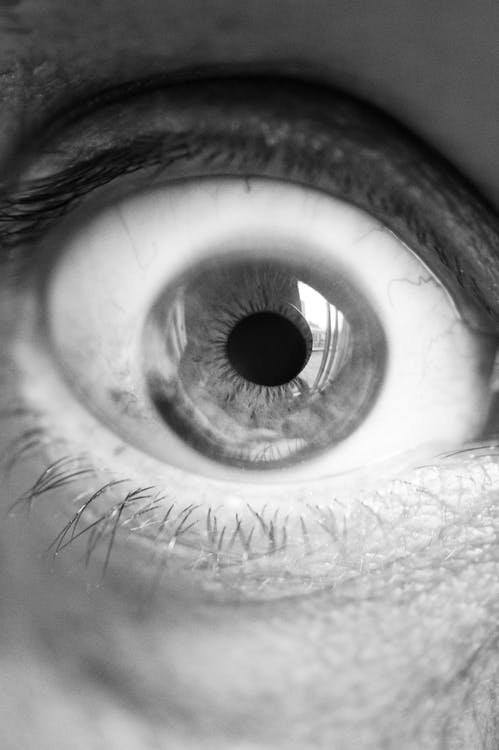
Purpose And Perception
To be courageous is to be firm. Therefore you must be firm about what you want out of life.
More than just fleeting pleasures and temporary comforts, you must build your life upon a bedrock of timeless truths and eternal values. They will serve as your anchor through these turbulent times, and give you a standard to hold yourself to. When threats and ambiguity come, they will guide your actions. Begin with the transcendentals of truth, goodness and beauty; then explore the great virtues and classical ethics to create a code to live by.
Loyalty. Integrity. Truth. Compassion. Generosity. Honour. These values, and so many more, should be the foundations of your life. Everything you do should reflect these values. In acting in accordance with virtue, you cultivate these virtues within yourself. The same goes for courage. Resolve yourself to live by your values and embody these virtues in all things, no matter what comes your way, and you will grow your capacity for courage.
Though a howling mob may demand that you conform to them, recognize that if their values are not aligned with yours, you should not, must not, comply. In compromising your code, you compromise your soul. When you make just one compromise, future compromises come easy. And they become increasingly easier until you have nothing left.
From your code comes your purpose in life. For a police officer it could be to protect and serve the innocent, for a doctor it could be to heal the sick, for a teacher it could be to illuminate minds. Founded in the virtues, this purpose will steer you through rough times and show you the path you must take.
Once you know what you want from life, perceive your current situation. Understand your strengths and weaknesses, opportunities and threats. Do not cling to the hope that things will turn out favourably for you. Do not fear things turning against you, and so flee from contemplating unpleasantness. You must see the situation exactly as it is, setting aside all prejudices, obscurations, biases and preconceptions.
When faced with a difficult situation, recognise that every problem carries within itself its solution. Once you clearly see what you want and the problems in your way, the solution will arise naturally. This requires you to view the difficulties, dangers and/or obstacles in your path with clear eyes, to be clear about what you want and what you stand for, and to be committed to navigating your way to success.
The goal is not to bull your way to success. You could try to meet obstacles head-on and attempt to smash them down. But what if you lack the resources or the ability to do this? Or what if the problems turn out to be much more difficult than you expected? Trying to impose yourself on the situation would merely lead to exhaustion, heartache and worse.
Instead, strive to create the causes and conditions for effortless action. First understand what you need to accomplish before you can achieve your goal, and the conditions necessary for success. Then set about creating these conditions on your way to the goal.
Suppose your goal is to lose weight. But you have no idea how to exercise or how to diet, and you don't know anyone who can help. Therefore, a necessary condition for success is to gain the knowledge necessary to achieve your goals. This may extend to hiring a personal trainer who can guide you along the way. It also requires dumping all the junk food in your pantry, kicking bad habits that cause you to gain weight, and adopt positive habits that help you lose weight. By removing the obstacles in your path, and by creating the conditions necessary for success, success becomes inevitable—and effortless.
We will adopt the same process to cultivate courage.
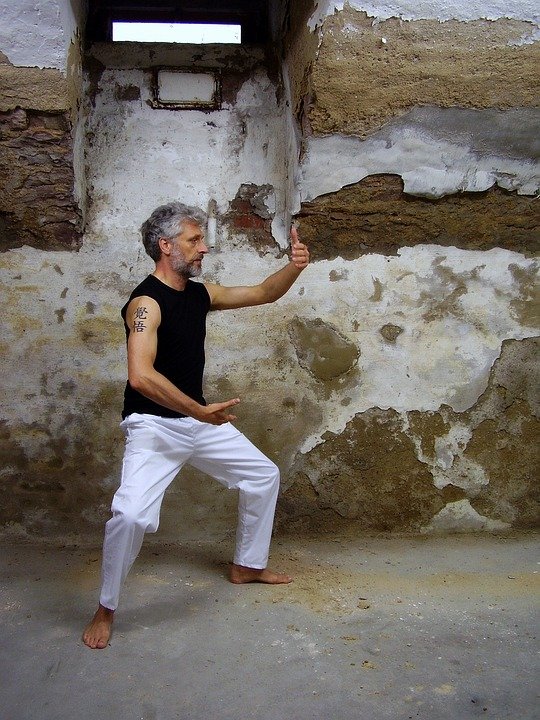
Body
Courage is not an emotion. It is a state of being.
Your body, mind and heart are entwined. When they are in harmony, you will naturally be at peak condition. Thus, to cultivate courage, we will work with all three elements. In this section, we will work on the body.
The human body is a fantastically complex arrangement of bones, nerves, tissues, blood vessels, organs, and more. When acting in total harmony, it is capable of astounding feats. But when brought out of alignment, it creates tensions, compressions, stiffness and chronic pain. This lack of harmony produces negative psychological effects, such as exacerbated stress, anxiety and discomfort. When you feel stressed, anxious, or otherwise uncomfortable, it is difficult for you to feel capable of overcoming obstacles in your way. Bringing your body back into alignment relieves your entire being, bringing psychological clarity, freedom and well-being, allowing courage and vitality to bloom.
Begin by aligning your spine. Your spine, neck, head should be aligned and upright. Tilting your head forward places great strain on your neck and shoulders. Likewise, your pelvis should be held in a neutral position as well. Then check to ensure that your shoulders and hips are held in horizontal alignment, then your elbows and knees, wrists and ankles. A quick and simple way to do this is to back yourself against a wall and align your back. Pay attention to how your body feels in this position, and seek to maintain it.
Seek to align the bones of your body. Your weight should pass from your skull down your spine, through your pelvis, down your legs, through your soles, and into the earth. Develop a state of full-body relaxation. Instead of tensing muscles to consciously align your body, relax them. Release the muscles. Bend your knees and joints slightly, By releasing all the tension in you, you remove the physical conditions that generate fear and anxiety in your heart.
Press your tongue to the top of your palate. Feel the top of your head pressing up against the sky. In addition to structural alignment, this posture maximises the benefits of nose breathing. As you breathe through your nose, establish the principle of full below and empty above. Your chest should feel empty and relaxed, while your abdomen should feel full and firm. This is breathing from your diaphragm, with your belly rising and falling while your chest remains still.
This deep, diaphragmatic breathing reduces stress, massages the internal organs, and improves the immune and digestion response. This creates balance, stability and calmness, giving rise to exuberance and courage. Conversely, if the abdomen presses upwards and the chest is tense, you will feel jittery and anxious.
Whenever you are faced with difficult or fearful situations, adopt tactical breathing. All you need do is to perform deep, rhythmic breathing. The standard count goes like this: in, two, three, four, hold, two, three, four, out, two, three, four. You inhale for four counts, hold for four, and exhale for four. Combined with the principle of full below and empty above, this provokes a powerful relaxation response, allowing you to release any fear you may feel in the moment.
You don't have to be perfectly aligned as described above to make it happen. In dangerous situations, you may not even have the opportunity to do it. But if you do, it will amplify the effect.
Your body language is intimately connected to your mood. If you habitually shrink yourself and cower into a ball, you will feel as afraid as your body tells you to. If you stand upright and hold yourself like royalty, you will feel as confident as the greatest kings. Therefore, make a habit of checking in and realigning your body, holding yourself in an upright, stable and confident posture.
Some internal martial arts like xingyiquan and xinyi liuhe quan are said to cultivate courage. More than just developing martial skill, these arts seek to transform the practitioner from the inside out. By training specific physical movements, they develop qualities like explosiveness, timing, proprioception, relaxation, deep breathing, and whole body power. They demand the practitioner to confront the enemy head-on, further cultivating courage. It produces an indomitable attitude, the mindset of blowing down all obstacles in your way. Should you feel drawn to take things to the next level, feel free to explore these arts.
For more information, you can look up Xingyiquan: The Art of Internal Alchemy by Tom Bisio.
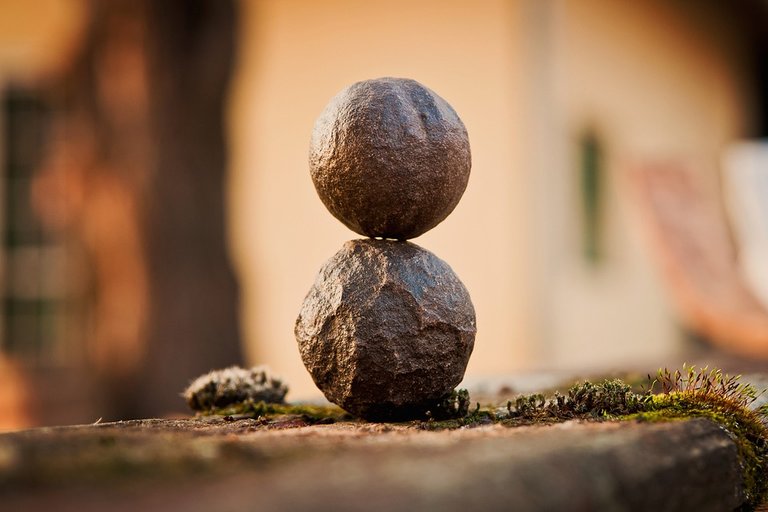
Mind
What does fear feel like?
Your heart is pounding. Your skin is clammy. Your breathing becomes fast and shallow.
What does excitement feel like?
Your heart is pounding. Your skin is clammy. Your breathing becomes fast and shallow.
The physiological response to fear and excitement is one and the same. The body responds to a potential threat by dumping adrenaline into your bloodstream. This response prepares your body to fight or to flee.
There are two key differences between fear and excitement. The first is perception.
Whenever you feel afraid, flip the script. Do not deny any fear you may feel, but do not cling to it either. Recognize that while it is natural for you to feel afraid, you are now facing an opportunity for you to rise to the occasion. Your body is helping you by revving up for maximum performance. Embrace these physical sensations and boldly strive forth to do what you must do.
Obviously, this only works if you are in fact prepared for the situation. If you're not prepared, you will fail. Adrenaline without skill leads to disaster. Therefore, you must prepare yourself by seeking out relevant skills for situations you may face. Then you will have the capability to meet a crisis—and with capability comes confidence.
The second difference is adrenaline. Greater amounts of adrenaline is positively correlated with arousal of negative feelings. Too much adrenaline may cause you to feel afraid.
You don't want too much adrenaline, but you don't want to extinguish the adrenaline response either. That response is meant to protect you in times of crisis. It is how you summon the strength and speed to survive a difficult time. Instead, you want to moderate the adrenaline response. You only need just enough adrenaline to get through the current situation. The way to do that is tactical breathing.
The peripheral nervous system governs the nerves and ganglia outside of the brain and spinal cord. It is composed of the autonomic nervous system and the somatic nervous system. The somatic nervous system controls voluntary muscular systems, while the autonomic nervous system governs _in_voluntary responses to govern physiological functions. The adrenaline dump falls under the autonomic nervous system.
The act of breathing spans both the voluntary and autonomic nervous systems.
An adrenaline dump may cause you to breathe hard and forcefully, or fast and shallowly. But if you notice it, you can take it under control. Switch to tactical breathing and consciously relax your muscles. This exerts indirect control over your autonomic nervous system, calming you down.
Again, the goal is not to be completely calm. The goal is to moderate your adrenaline to an appropriate level. Do this by consciously regulating your breath to an appropriate level. When you need brute strength and power, breathe quick and deep to charge your bloodstream and muscles with oxygen. When you need quick wits or fine motor movements, slower, drawn-out breaths help you maintain your cognitive and fine motor abilities—especially important if you need to remain calm and think through a situation. You know you're doing it right when you feel empowered instead of afraid.
Courage isn't simply about overcoming fear. It is also the ability to act in spite of difficulties and unpleasantness. You may not necessarily feel like your life is in danger, but nonetheless you may encounter an obstacle, creating a psychological sensation of resistance. When such cases arrive, you must perceive the situation clearly.
Does the obstacle actually exist, or is it simply a figment of your imagination? If the latter, then the simplest and cleanest way to resolve it is to press ahead, to focus on the task and the purpose, not the emotion or the resistance. The sooner you face unpleasantness, the sooner you get it over and done with. By concentrating your intention on the action, you leave no room for fear, uncertainty and doubt to creep in.
Should that obstacle prove to be a significant one, you must decide whether to attack it head-on or to bypass it. Different people will have their preferences, based on their capabilities and their personalities. The one thing you cannot do is to be obsessed by it.
Hyperfocus on an obstacle makes it look much larger than it truly is. It generates feelings of resistance and unpleasantness that are even more outsized. Clinging to these negative emotions discourages you from acting. As a result, nothing gets done.
You must act. Act in wisdom, act in honour, but you must act. By focusing your energies on developing and executing the solution, the problem naturally dissolves.
The head-on approach is the simplest. It is a tank rolling over trenches and wire to strike deep into the heart of enemy territory. But you are not a tank. You are not bulletproof. You may not always have the ability to just steamroll over everything in your way, at least not without consequence. If you don't, but you try anyway, you will simply be slamming your head into a brick wall. The wall will still be there, but now you've injured body, brain and dignity.
The indirect approach is softer and more fluid. It draws inspiration from water. Instead of crashing and dissipating against a solid wall, the goal is to seep through tiny cracks, to bypass resistance, and address the source of the problem. Instead of attempting to impose your will on the situation, adapt smoothly to it so you are no longer affected by the obstacle and position yourself to dissolve it.
There is a time and place for either approach. Pick what is best—and execute. Always execute. To be courageous is to act, to commit yourself to action. Once you are mentally committed to the act, the rest of your body will naturally follow.
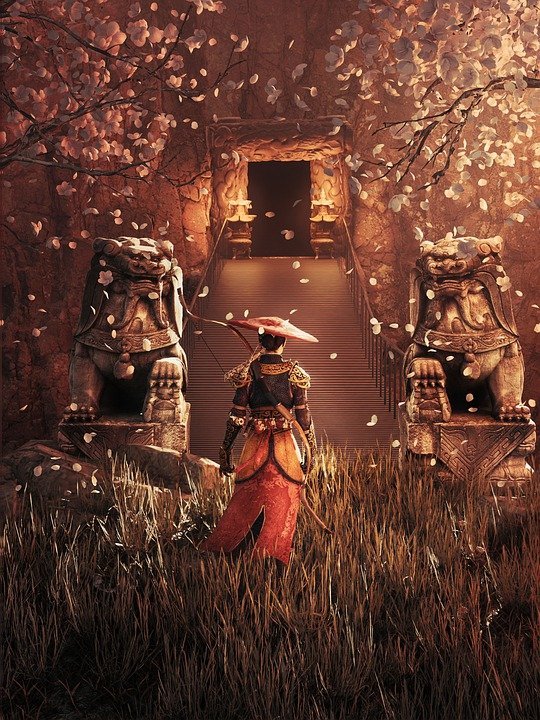
Heart
To be courageous is to be firm in the face of hardship. Therefore, to cultivate courage is to cultivate firmness.
Buddhist and Daoist meditation practices seek to do just that. They train the practitioner to remain still in a specific pose for a lengthy period of time, and perhaps engage in sophisticated mental exercise. In stillness, the practitioner develops firmness of heart and spirit.
The Buddhist deity Acala, called Budongmingwang in Chinese and Fudomyoo in Japanese, is the embodiment of firmness. His name means 'The Immovable'. He is not moved by outside forces, and (in Japan) does not himself move. He is venerated as a protector of the Dharma, a remover of obstacles and a destroyer of evil.
The Unfettered Mind by Buddhist monk Takuan Soho describes the power of immovability to Yagyu Munenori, swordsmanship instructor to two shogun. Takuan opines that in immovability, one finds total freedom.
During a duel with an enemy, when your heart is immovable, you will not be caught by the enemy's sword or his movements, or your own. This means that you will not be hyper-focused on any one element of the confrontation, and miss other critical information. Likewise, you will not be lured into a trap or fall for a feint. Instead, by seeing the situation exactly as it is, without fear or prejudgment, without obsessing on one aspect at the expense of others, you can respond freely and swiftly to the incoming danger, and adapt as needed.
From the West, Christianity offers plenty of examples too. Jesus Christ knew he would be betrayed, but he went to his death anyway. Of the Twelve Apostles, Christian tradition holds that all but one died violently. Though they recognized the dangers, they chose to stay true to their mission. In embracing their purpose, in holding fast even on pain on death, they entered the halls of eternity.
To be firm of heart is to embrace immovability and adaptability. To be immovable is to remain true to your mission, and to not be moved by delusions, partial feelings or incomplete perceptions. To be adaptable is to shape yourself to the situation, to accomplish your goal. To cultivate courage, one must therefore be firm yet fluid.
Returning to the trenches of World War I, we see the failure of this principle. One could argue that every man who went over the top to rush the enemy lines in the face of gas, artillery, machine guns and snipers remained true to the mission. Yet they died by the tens and the hundreds of thousands. It took the development of infiltration and assault tactics, and later the tank, directly circumventing or overcoming the trenches, to break the bloody stalemate.
To cultivate firmness of heart, you must first know what to be firm on. This brings us back to identifying your purpose and building a bedrock of values. You must commit yourself to these values and live them in every aspect of your life.
Then comes other practices to further fortify your heart, such as internal martial arts, meditation, and other such psycho-spiritual practices. The more you commit yourself to these practices, the easier it is for you to commit yourself to your values.
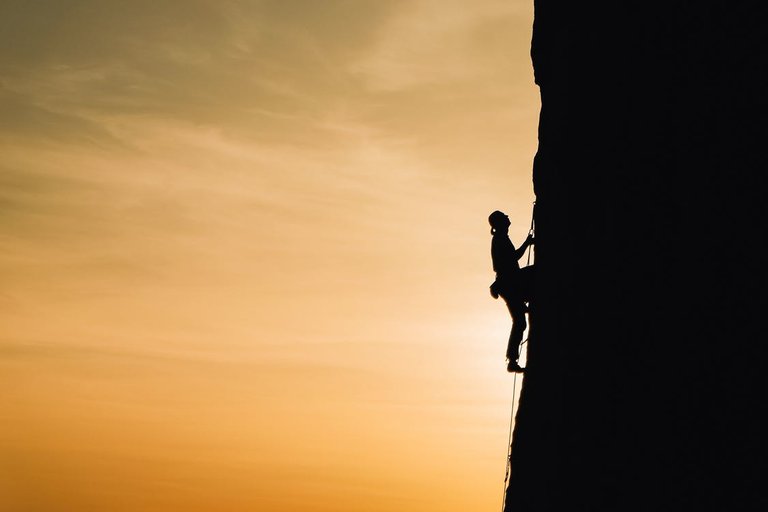
Practice, Practice, Practice
Cultivation is not something you read. It is something you do.
You must put these principles into practice. If you are not already used to exercising courage in day-to-day life, then when an extraordinary occasion occurs, you will falter and you will fail.
Do you want that? If you don't, then you must practice now.
To be courageous is to act in spite of difficulty, danger, unpleasantness and fear. To cultivate courage, you must therefore do what is difficult, dangerous, unpleasant and fearful.
Develop a strict weightlifting routine and stick to it. Practice fasting or dietary restrictions. Give a speech in public. Learn a physically demanding skill. Whatever you wish to do, it should feel difficult, dangerous, unpleasant or fearful—and it should require you to keep doing it, over and over and over again.
Introduce failure conditions. Stake something that you will lose if you fail. If your speech flops, your audience laughs at you. If you fail to meet your gym goals, you buddies laugh at you. Give yourself a strong disincentive for failure, for absence, and for just running away from it. It should feel painful to give up, so you have an extra reason to stick to it.
By actively seeking out these activities, you are consciously transforming yourself. You are desensitising yourself to what you previously felt was difficult, dangerous, unpleasant and afraid. By accustomising yourself to such sensations, then when the true test comes, you will be better prepared to face it.
The highest form of courage does not feel like courage. Others may call it courage, but to the actor in the moment, it does not feel like anything at all. He thinks what he did was simply unremarkable, something that was expected of him, something done and gone in a flash. One reaches that state through a combination of factors: commitment to a higher purpose, high-quality training, non-attachment to resistance, and firmness of heart. It is not something that can be cultivated overnight. But with consistent practice, you might surprise yourself.
Hard times are coming—and in some places, they are already here. Do not hope that they will pass, or at least get better. Steel yourself for the possibility that things will get worse. Now, more than ever, is a time for fortitude, for wisdom, and most of all, for courage.
Dare you rise to the occasion?
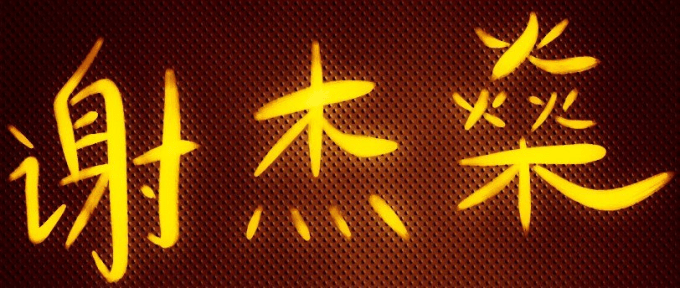
If you want to see how the internal martial arts cultivate courage, check out Saga of the Swordbreaker here!